Extension of useful life through repair and optimization of fan impellers
The refurbishment and upgrading of fan impellers represent a considerable performance and cost effectiveness factor. Some users take advantage of this realization to consistently increase the efficiency of their process air fans. Their conclusion: Long-term trouble-free operation also involves corrective maintenance based on economic influences. This even includes special services provided by the fan manufacturer.
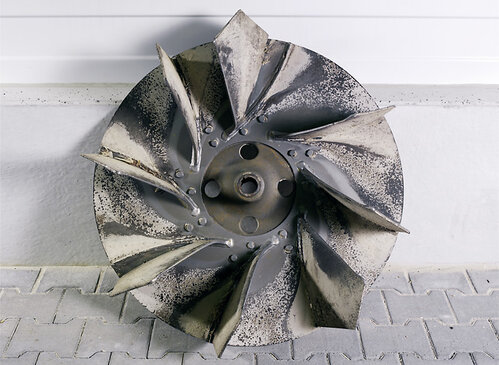
Mathematical logic?
This article is a sort of “zeitgeist” reflection. There are new trends in the optimization, corrective repair and servicing of impellers in process fans. The components weighing from about 30 kg up to several tonnes, already successfully in operation for several months, are being increasingly upgraded. Not because of construction faults, but to improve performance and efficiency.
While in this country many companies are still discussing whether the costs for external upgrading make sense, some branches and users abroad have already taken this path. They see this as a way to increase productivity and competitiveness and to lower costs. Upgrading, retrofits and improvement in the performance of process air fans are considered to be part of energy management, reduction of operating costs and increase in efficiency. Ventilatorenfabrik Oelde is receiving an increasing number of small and large impellers for the purpose of upgrading and retrofitting, even from overseas. The rotors, with diameters up to 4 m, have to be repaired, upgraded or modified to suit changing process requirements. Included are rotors not originating from Oelde and also those constructed by companies which do not exist any more. Is this just a whim of those companies with sufficient capital or is it a technologically and commercially sound decision?
Well, there is certainly an economic background to the action. More and more industrial companies are realizing that flexible profit factors can be found in diverse production and process activities. The so-called holistic approach to increasing efficiency of equipment includes, therefore, ongoing maintenance and professional repairs. Because of the peripheral environmental conditions and reliability requirements, cement works and the steel-producing industry are considered to be pioneers with their costeffective farsightedness:
Cemented Guarantee for Success
The cement industry is a key domain for centrifugal fans. Directly linked are the manufacturers of aggregate, such as limestone, gypsum, etc. The fans are indispensable in kiln firing, i.e. in the energetic use of oil, gas, coal and secondary raw materials.
The primary processes of grinding, firing, cooling and dust collection cannot be carried out without system fans. Raw meal, cement and coal mills and separators need reliably and continuously metered process air to operate successfully, economically, safely and in an environmentally friendly manner. The same applies to bypasses, and the handling of product, fresh air and discharge gases.
Action und Reaction
Fans in the cement and steel industry are, indeed, permanently exposed to long-term stress. The process conditions, particularly the dust-laden air, become a problem. Material is deposited, becomes caked and encrusted, causes unbalance and reduces the cross section, thus increasing the flow velocity. Special components and measures must provide a remedy where possible and depending on requirements. So it’s a good thing that it is possible to work against wear and the risk of downtimes at the planning stage by shape, geometry and angle of the impeller blades. Hardfacing has proved ideal as a defence against an extensive wear assault. Wear plates can be welded on and are versatile in their application. Hardfacing with tungsten or chromium carbide increases the useful life of components when the medium handled is particularly abrasive.
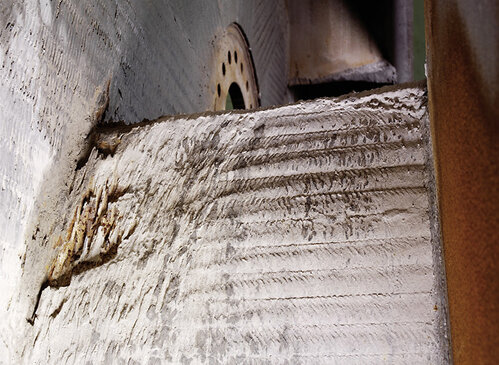
All in all, the aim is to prevent attacks by media, heat and/or humidity causing increased operating costs or unplanned plant downtimes. Developments relating to construction and material, particularly bearings, wear protection components – but also permanent observation – all play their part. Particular attention is paid to vibrations, which occur on all rotating machines, and their reduction. Fans leaving the factory are all certified as having a high operational smoothness. As a result of unfavourable in-flow, caking, corrosion, abrasion, extreme temperatures, etc. vibrational energy can have a damaging effect. Changed process or operational conditions almost inevitably have a negative impact on operational smoothness. This in turn causes increased energy consumption, reduction of air volume, fluctuating efficiency and potential damage to important components.
Fortunately, problems on welds, seals, bearings, shafts and drive units can be detected. They must, however, be recognized at an early stage and remedied as quickly as possible.
The question: „Can we do that ourselves?“, can really only be answered with “No!”. At least when there are no specialists in the factory with the relevant material, welding and repair skills, and the necessary inspection instruments, testing expertise and relevant certification are not available. An external check and repair are particularly worthwhile when the process parameters have been changed, performance increases are planned, tere is a sudden reduction in performance, etc. Also included are erosion, breaks, hair-cracks, caking or measured deviations from the norm. Expertise and specific know-how provided by those with specialist knowledge about the product and branch of industry are always cost-effective. Improper handling (do it yourself!) has often resulted in considerable damage to impeller or shaft.
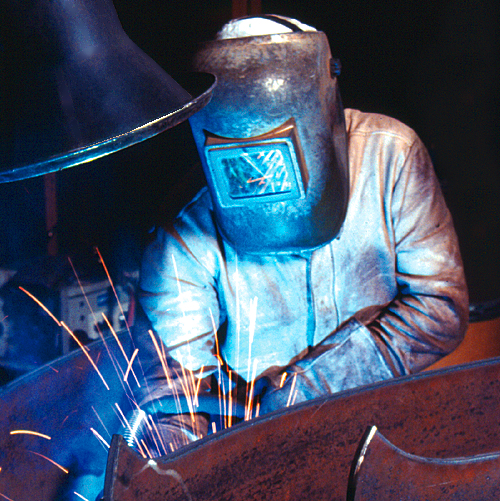
Cost-effective Eye-Contact
How best to proceed? Improvement of cost-effectiveness begins with visual inspection by company (trained) specialists. Despite state-of-the-art sensoring technology and practical telemonitoring with long-distance diagnostics, visual inspection represents an effective way of determining the current state of the machine. If irregularities should be detected, thanks to modern communication technology, speedy advice can be obtained, for example from Venti Oelde. The decision must now be made which is better, self-help or specialist know-how provided by the fan constructor (on site or in his factory), including material and weld inspection, vibration reports, balancing, quick repair or an overall upgrading. Help in reducing costs is only a simple phone call or e-mail away. Extremely expensive consequential costs can thus nearly always be avoided.
On the Way to Efficiency Increase
Sometimes sending the impeller to the fan manufacturer is the most efficient solution. If wished, dismantling on site can be carried out by specialist personnel. When transportation to the factory has been arranged, there follows a predetermined course of action of moderate cost in accordance with factory norms and quality management standards. Specialist personnel and inspection experts direct matters:
Dismantling and, where necessary, cleaning of steel parts
Visual checks, fault detection with ultrasound, dye-penetration, magnetic particle testing
Additional measurements/tests, comparison with any available documents
Damage analysis by experienced specialists
Suggestion of relevant repairs, wear protection improvement, e.g. by hardfacing with tungsten carbide
Cost analysis and submission of quotation
Coordination of procedure/agreement of dates with production and customer
Repair/upgrading/adaptation to changed process data by specialist personnel
QM, inspection and balancing reports
Final inspection by end-user/customer in the factory
Return
Erection and commissioning on site, when wished
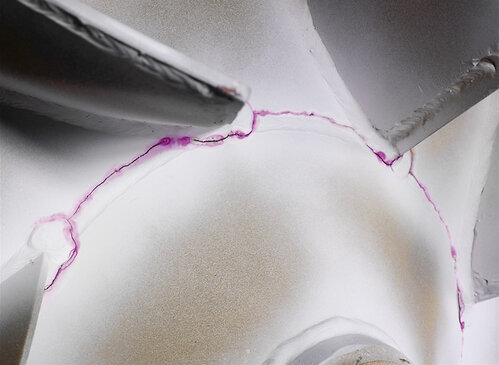
Not only but also
For those readers who are now wondering what there is about the above procedure which could possibly lead to controversial discussions, there is following response: In some industries where large and special fans are used, the prophylactic maintenance and upgrading of impellers is a calculated operating safety and productivity factor. There are even users who have two impellers for one fan, one of which is being processed while the other is in operation. Other users, however, let their impellers continue turning until due to neglect an extremely expensive repair becomes necessary. Nevertheless, increasing acceptance indicates that ideas are changing, particularly in these times where factories are working to their full capacity.
Venti Oelde as been offering a comprehensive after-sales concept, and not just for the cement and steel industry, for many years: Personnel with specialist know-how are available with advice regarding modernisation, improvement of performance and efficiency, process optimization, maintenance and repair. Included are special measurements, on-site inspection and laboratory analysis in Oelde, inspection, repair and spare parts (for Venti Oelde and other systems). Also available are consultations, training, workshops (in the form of exchange of experiences or on individual subjects such as hardfacing, precision welding technology, flow, noise and vibration measurements, etc.).
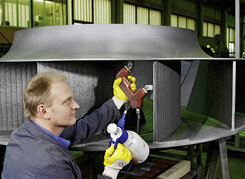

关注万迪欧德公众号

万迪欧德抖音号
Copyright © 2022-2023 Venti Oelde (Jiangsu) Air Handling Equipment Co. Ltd All Right
备案号:ICP 2023002554 技术支持:镁诚科技